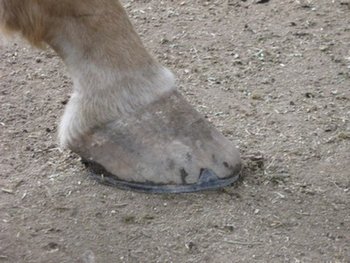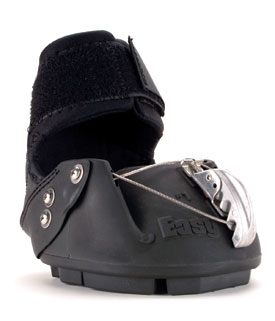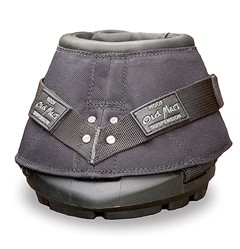I was having a conversation recently about my horses and the use of Easyboot Gloves. An offhand comment was made that continues to floor me. It was something along the lines of hoof boots are too expensive. I had to laugh to myself, because this happened to be one of those people who you just can’t argue with. I know plenty of those. Funny thing is, many of them have recently converted to barefoot and booted, when in the past they have adamantly fought the barefoot movement. It’s all good that ends good, that’s for certain!

So me being me, I set out for some good old fashioned research. You know, in the form of message boards. I chose a pretty popular exclusively equine message board that seems to attract individuals of all levels, from backyard owners to FEI dressage riders, all over the country and from others as well. I found a popular thread with several pages of responses. It was actually interesting to read through, because of the vast array of different prices that people pay.
The price of a trim ranged from $10 (with the comment that in Amish country, this price is very common), to $55. The average appeared to be $35-ish per trim. The costs of a full set of shoes ranged from $75.00 to $250.00. It seemed as though the average cost for a full set was $130.00, extras such as pads, pour-in pads and therapeutic (oxymoron??) shoes were obviously much, more.

We can make a fairly accurate statement that a set of shoes can last about eight weeks for the average rider, but those of us riding many, many miles in between appointments, will usually get between four-six weeks out of a set of shoes. We’ll say seven weeks. We’ll also say that we only are planning on riding/shoeing from March through October, which is about seven months. We’ll say the average rider can get a season of riding with four sets of shoes, which would mean the horse was on a seven week schedule. Paying the “average” price of $130 per set, we would spend about $520 in farrier services. I think this is a fairly low estimate.
Now if you’re like me, you don’t want to be paying for something you’re not using. So what about that first month of spring, where the wind howls and the rain blows sideways? Or that super hot-spell where the temps were over 100 degrees for several weeks? Unfortunately, while the shoe itself doesn’t get much wear and tear if you don’t ride for a couple weeks, the horse’s foot continues to grow and will still need to be re-shod at the end of the period, whether your rode hundreds of miles or four. I remember back when I shod my horses, my endurance gelding was pretty much on a four week schedule due to the timing of endurance rides. I am pretty generous with rest after a ride, so sometimes I was paying for a set of shoes to do a few training miles and one 50 mile race. Two weeks off, a few training rides, and another farrier appointment. DANG!
A set of hoof boots can range from $252.00 for a full set of Easyboot Gloves to as low as $200.00 for a full set of original Easyboots. Easyboot Epics and Grips will run about $300 for four, and Old Macs *are* pretty spendy, I will give you that! It does seem like the initial investment is costly, but lets think about the long-haul here. The life of a set of boots is determined by the actual miles ridden. They don’t need to be replaced every two months, in fact, many boots will last years with light riding. Wouldn’t you rather pay for actual use, and not just time?

Easyboot Grips- I am about to break out my exclusive use of Gloves and give the Grips a try for snow and mud. More to follow!

Most of us endurance riders are absolutely nuts. Not only do we wake up at un-Godly hours to set out to ride 50-100 miles in a day, we ride rain or shine, mud, snow, dust or rock. Our boots get lots and lots of miles. I went through one set of Gloves this year, riding three horses regularly. They were Khopy’s hind boots, which seem to take the brunt of the miles. Right before the last ride of the year, the area that the gaiter attached to the actual boot tore. The boots were pretty stretched and distorted from all the use, but otherwise the tread and gaiters were good. I don’t know exactly how many miles these boots have, but they had enough to bring an unconditioned horse (starting in March) through two 50-mile completions at the end of the year. Lots of miles. I chose to replace both front and hind boots at that time, but his front boots are still usable and most likely will be turned into “ice boots” with the use of Easycare Quick Studs. Awesome!

If the initial cost is too prohibitive for you right now, consider buying your horse a set of boots for his front feet, which tend to need more protection. Maybe you’ll be able to add a hind set later on, or you’ll find that front boots are sufficient at this time. Also, don’t forget, hoof boots make GREAT Christmas presents!! While it might seem like a lot of money upfront, the fact that you are paying for use is priceless! So go ahead, stretch your money and make an appointment to pull those shoes! There are plenty of knowledgeable people around for support, and numerous boot options to choose from. What are you waiting for?
Amanda Washington
~SW Idaho




